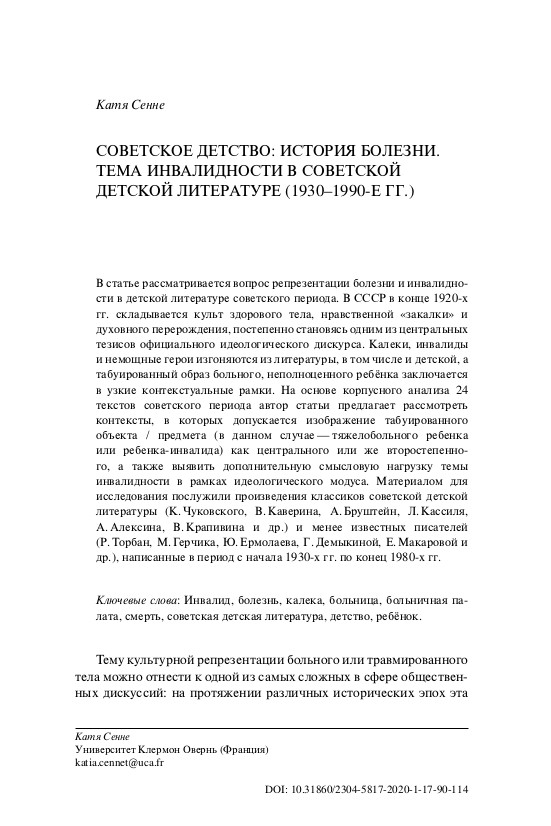Soviet Childhood: a Anamnesis. Theme of Disability in Soviet Children’s Literature (1930-1990s)
DOI:
https://doi.org/10.31860/2304-5817-2020-1-17-90-114Abstract
This article discusses the issue of representing illness and disability in children’s literature of the Soviet period, traces how this topic evolved in different periods of the Soviet era. In the USSR in the late 1920s a cult of a healthy body, moral “tempering” and spiritual rebirth is taking shape, gradually becoming one of the central theses of the official ideological discourse. People with disabilities, with a few exceptions, are expelled from literature, including children’s, and the image of a sick, inferior child tabooed by public consciousness lies in a narrow contextual framework. Based on a corpus analysis of 24 texts of the Soviet period, the author of the article proposes to consider contexts in which the image of a tabooed object / subject (in this case, a seriously ill child or a disabled child) is allowed to be central or secondary, as well as to identify additional semantic burden of the topic of disability within ideological mode. The material for the study was the work of classics of Soviet children’s literature (K. Chukovsky, A. Brushtein, A. Aleksin and others) and less well-known writers (R. Torban, M. Gerchik, Yu. Ermolaev, G. Demykina etc.), written between 1932 and 1989.
Keywords: disabled person, illness, cripple, hospital, hospital ward, death, Soviet children’s literature, childhood, child







